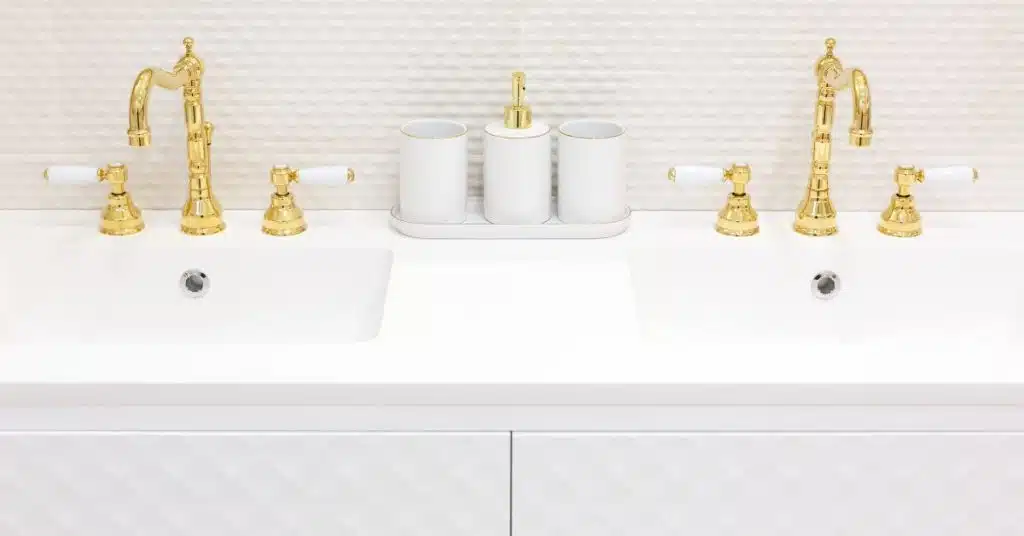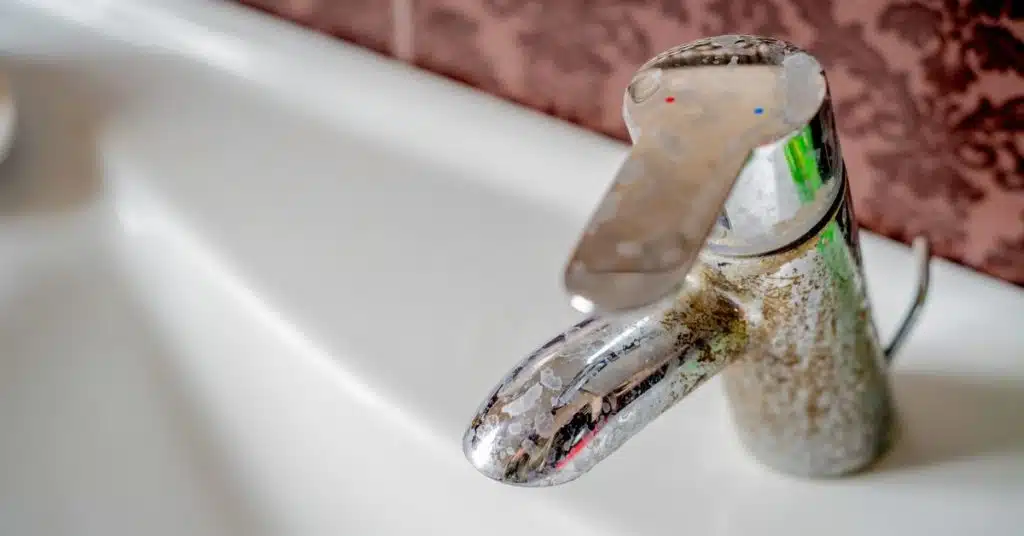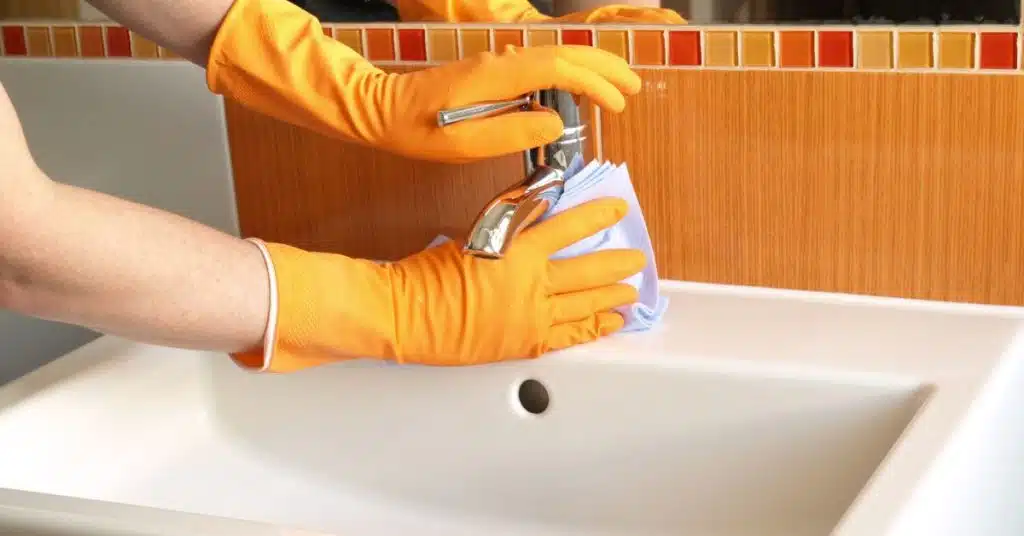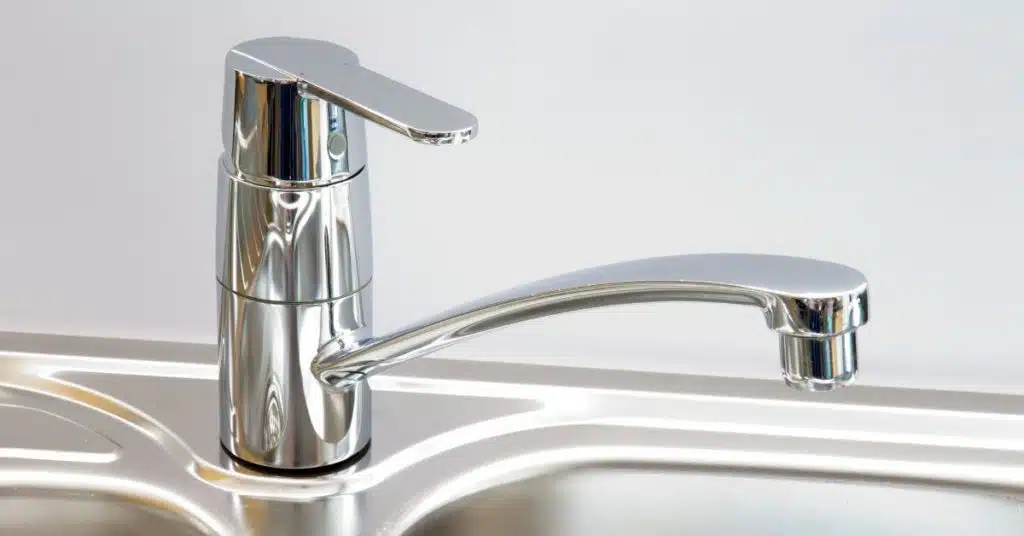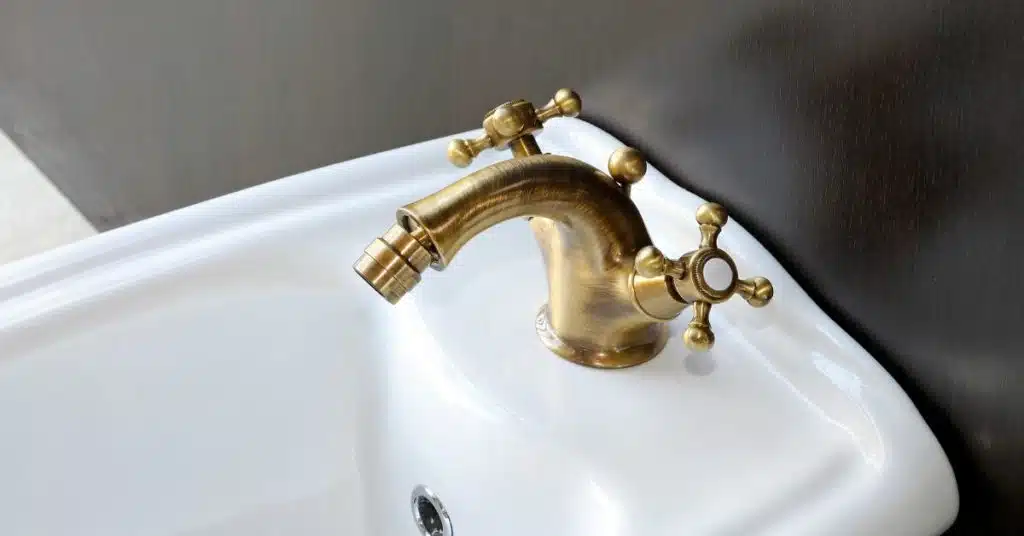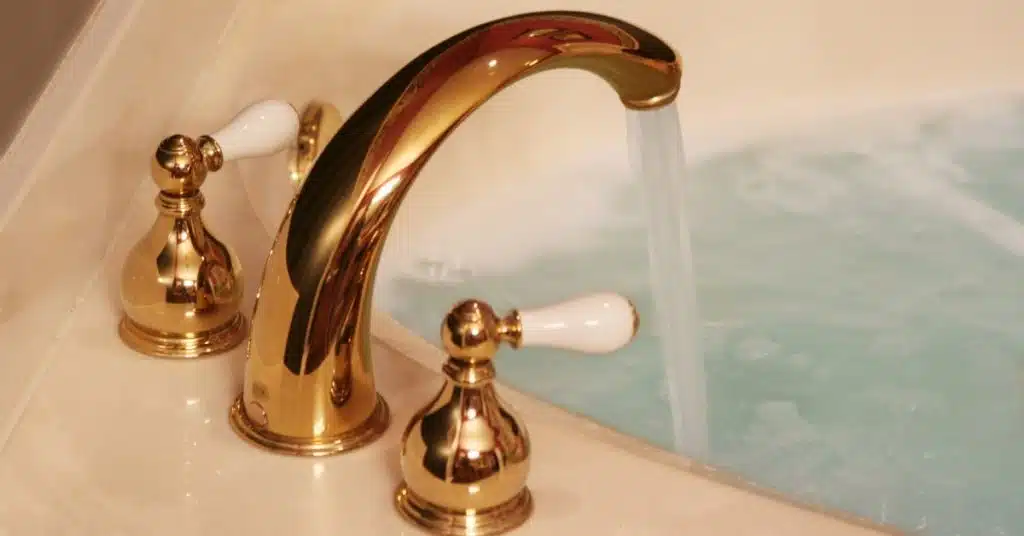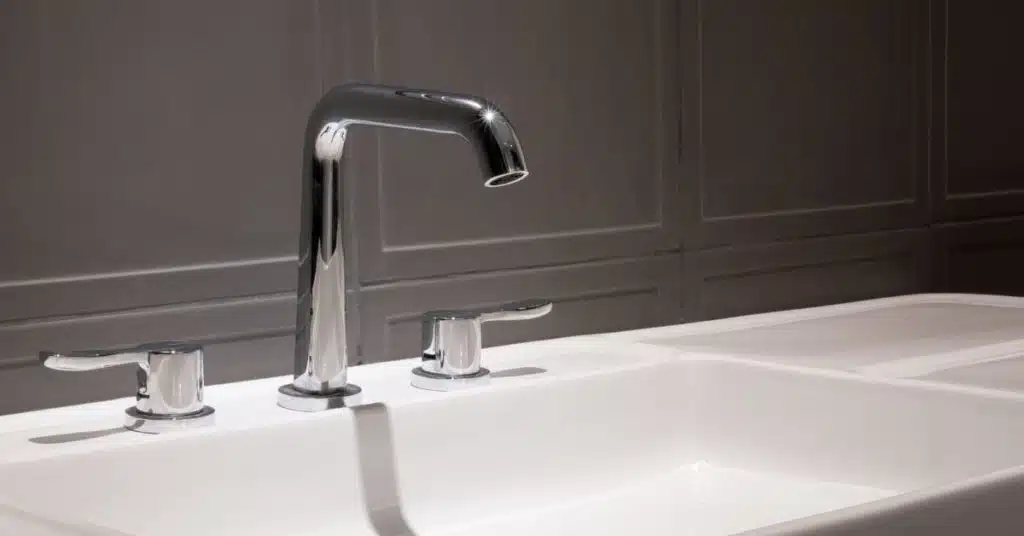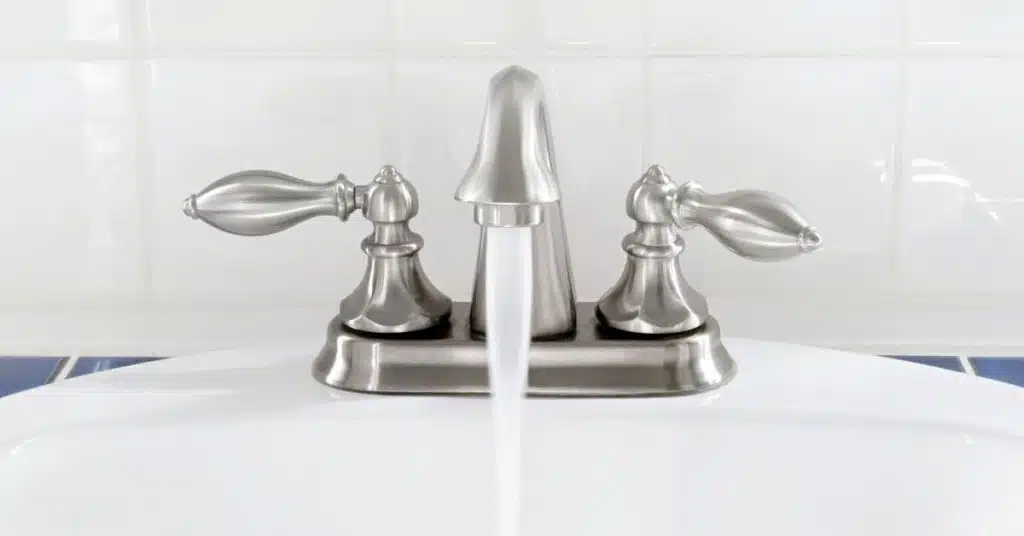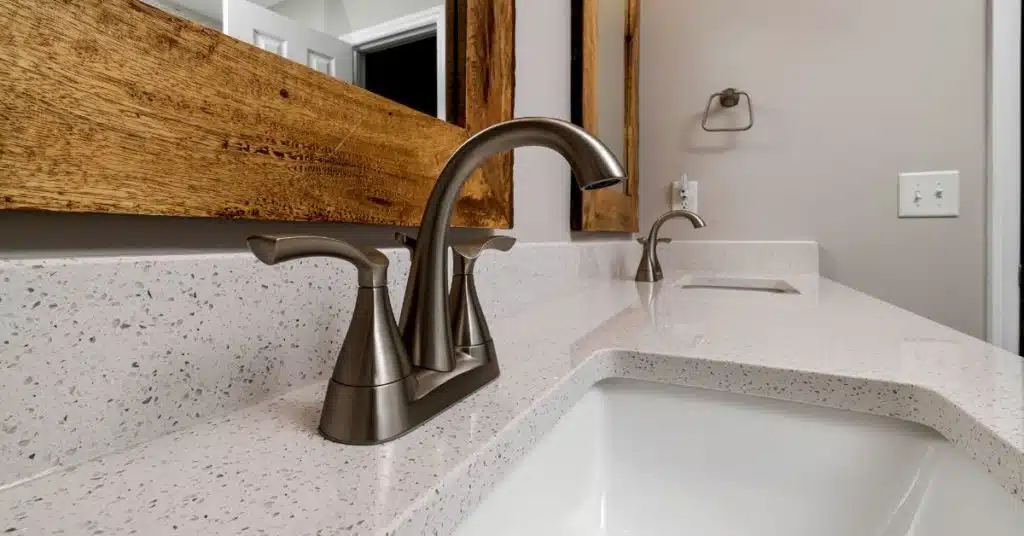The faucets can quickly get soiled and grimy in a busy home, even after being cleaned just a few days ago. Soap, shampoo, hair, and regular filth can quickly cause your faucet to get soiled to the point where it needs to be thoroughly cleaned. The proper cleaning of your faucet does not need much effort, but it does require that you have the appropriate equipment and know-how to wash them according to their material.
Learn more about your faucets
Your faucet could have a shorter lifespan if you have hard water since it contains high calcium levels and other minerals. The accumulation of hard water causes damage, disrupting your faucet’s functionality and the piping that connects it. These crystalline formations of hard minerals tend to congregate in areas where water sits and collects.
Once you begin to see a difference in how the water flows from the nozzle, whether it be less water pressure or a shift in how it sprays, this could indicate hard water buildup impacting your faucet. The accumulation of minerals causes obstructions in your faucet, which prevents water from flowing freely downward and instead causes it to drip or spray in the wrong direction. In addition, you might see a white buildup in or surrounding your faucet. If your water contains iron, the deposit may have a rusty or yellow color, which will almost surely leave a stain on your sink.
Installing a water softener in the home and ensuring that it is regularly maintained will help alleviate the problems caused by the accumulation of hard water and avoid further damage to your faucet.
How to treat hard water stains on faucets
When cleaning hard mineral deposits off your faucets, you have a few options to choose from.
Utilizing a glass or window cleaner, as well as white vinegar, concentrated on the regions covered in deposits, could be helpful. Attaching a cotton pad or napkin soaked in white vinegar, for instance, to the tip or head of the faucet (using a knot or hairband) for 5 to 15 minutes is the usual treatment. This eliminates the crusty deposit of hard water that was present. Removing mineral buildup in the tip can also be accomplished by rinsing the tip using vinegar and brushing using a toothbrush. These methods are very similar to a widely used method for removing hard water buildup, which involves placing white vinegar in a plastic bag, covering and soaking your shower head in the vinegar, and then securing the bag with an elastic band.
If you decide to use vinegar as part of a cleaning agent, it is recommended that you create a solution that is half water and half vinegar to decrease the risk of damaging your faucet. If you utilize vinegar as a remedy for the aftereffects of hard water, you need to ensure that it is fully rinsed using clean water and then dried after the cleaning process.
Purchase a specially designed mineral deposit cleanser if you find that a deposit is extremely difficult to remove. This will help further maintain the aesthetic of your faucet as well as its structural durability.
Timely and thorough upkeep and preventative measures
There are a few general guidelines that should be followed when it comes to cleaning and maintaining your faucet, regardless of its finish.
When regularly cleaning your faucet, all you need is a damp gentle cloth like microfiber and a small quantity of mild detergent. Just be sure to wipe it off using a dry clean cloth so that there are no water streaks left behind. This ought to be sufficient to keep the natural sheen of your faucet.
If you want to avoid water spots or other damage to the faucet, you should make it a habit to wipe it off after every use with a clean cloth made of microfiber. If water stains do occur on your faucet, you should be able to easily eliminate them by rubbing a soft, damp cloth with warm water.
Prevent using scrubbers or pads that are too abrasive since they can destroy the faucet’s shine by scuffing and scratching the finish. In places that are more difficult to access or that have a tendency to accumulate the greatest water deposits, all you need is a brush with soft bristles.
In a similar manner, you should steer clear of any cleaning products that are harsh, abrasive, or bleach-based. For instance, those include hydrochloric, hydrofluoric, phosphoric acids, and caustic agents. Carefully reading product labels will help you avoid using cleaners that may cause your unique faucet to tarnish, corrode, or damage.
The removal of most stains can be accomplished by applying baking soda as well as a small amount of water to a toothbrush and scrubbing the spot. Utilize a polish or wax, either spray or liquid, on faucets having a matte finish to produce an appearance that is consistently uniform and to avoid fingerprints and other markings that are caused by normal use.
In general, using cleansers and scrubbers that are not abrasive is the best way to avoid scratching or otherwise damaging the faucet. When selecting and utilizing cleansers, you should never forget to keep the faucet’s finish in mind at all times.
Detailed guides for several types of sink faucets
Stainless steel Faucet
The luster and durability of faucets made of stainless steel can be maintained with routine cleanings using soap and water. Avoid using steel brushes and other harsh cleaners and scrubbers since they will damage and degrade stainless steel. Simply massage in the same direction as the grain and let it dry to achieve the best possible appearance. In order to prevent corrosion, all cleaners used should be rinsed off stainless steel as swiftly as possible. After usage, thoroughly drying faucets made of stainless steel will avoid water streaks and metal rust. Do not allow rags, towels, or sponges to dry out on stainless steel since this will also diminish the luster of the material.
Brass Faucet
Applying a gentle detergent or solution to a clean cloth and then rinsing it in hot water is the best method for cleaning a faucet made of brass. Brass finishes are susceptible to scuffing and scratching if they do not have a protective coating. Avoid using acidic fluids, as well as astringent or abrasive cleaners, since these can cause more damage to the protective coating of a brass finish, causing the gloss to become less noticeable over time. Brass finishes are similarly susceptible to oxidation for the same reason. Make a paste using baking soda as well as white vinegar, and use an old toothbrush to rub it into the oxidized areas of a brass faucet. This will eliminate oxidation. After allowing it to sit for around half an hour, properly rinse it, then pat dry with a clean cloth. In order to have a successful outcome, you can also apply a polish. To eliminate stains from solid brass faucets, lemon, as well as table salt are both effective cleaning agents. Lacquer, polish, wax, and even oil like mineral, olive, and linseed can be used to help maintain brass glossy and protected so that its sheen will remain for a long time.
Bronze Faucet
It is vital to clean bronze finishes on a regular basis to keep them looking great and to prevent corrosion, greenish layer, and inevitable degradation. Every day, use a soft cloth made of microfiber to carefully wipe down the bronze faucet in order to eliminate any residue left behind by soap or toothpaste, as well as dust, all of which can destroy the bronze surface. When cleaning bronze surfaces, combine one teaspoon of salt, including one gallon of water, and apply the solution with a brush that has soft bristles. To perform a thorough cleaning, combine a teaspoon of salt with one cup of distilled white vinegar, and then stir in flour until a paste is formed. Apply a layer of the paste all over the bronze faucet, wait an hour for it to dry, and then wash it off using warm water. Always put the finishing touches on your faucet by drying it with a clean towel. On the other hand, you should steer clear of frequently washing oil-rubbed bronze and utilize a dry, soft cloth to lightly wipe the faucet after every use. Always use a soft, wet cloth soaked in clean water to wipe down and clean the faucet, and then dry it off as soon as you’re done. If you notice some moisture on an oil-rubbed bronze faucet, instead of rubbing it off, remove the moisture with a cotton swab in order to avoid water stains from forming. If you want to clean the bronze faucet with vinegar, you should always dilute it with water at a ratio of 50 percent water to 50 percent vinegar, and you shouldn’t let it stay for more than a couple of minutes. To restore the shine of bronze faucets and fixtures, applying a thin coating of liquid antique wax on a regular basis, or even oil is an excellent option.
Chrome Faucet
Even though it is robust, the brilliance of chrome can frequently become hidden by surface defects such as fingerprints and watermarks. Spots can be removed using a dry buff done with a gentle cloth. Chrome can be cleaned effectively using soap and water, using a gentle cloth or sponge, provided that it is thoroughly washed and dried after washing. Another method for cleaning chrome is to use the same amount of water and distilled white vinegar in a cleaning solution. Be careful not to let it rest for too long, as chrome finishes are especially prone to deterioration when exposed to vinegar for a lengthy period of time. Like most other finishes, chrome faucets should not be cleaned with abrasive soaps or scrubbers.
Polished Nickel Faucet
When it comes to routine care, polished nickel adapts nicely to a brief wipe down with a damp cloth or, if possible, a wet and soapy washcloth, followed by a buff dry. Polished nickel, like chrome, is susceptible to exhibiting fingerprints and water spots, but it requires a little bit more upkeep to preserve its brilliance than chrome. Just like brass, nickel can corrode over time, so polished nickel faucets need to be maintained regularly. This is especially the case if the top layer of polish becomes cracked or chipped. You can remove water stains when necessary by gently rubbing them off with a rag dampened with white vinegar. To ensure thorough cleaning, spray some disinfectant on the surface, wait a minute for it to take effect, and then use a toothbrush to scrape any areas that are difficult to access, like the edges. It is important to remember to thoroughly rinse the cleanser off your faucet before gently drying it using a clean rag.
Brushed Nickel Faucet
Brushed nickel, on the other hand, does not exhibit fingerprints or wet stains like polished nickel does. And the amount of maintenance required is not overly burdensome; daily cleaning with a damp cloth is all that is needed. Similarly to chrome, faucets made from brushed nickel is a hard metal that is also simple to clean. Scrubbing and cleaning with harsh chemicals can cause corrosion, so you should steer clear of products like that whenever feasible.
If you are unsure, consult the manufacturer’s website for advice on maintaining and caring for the item. Cleansers explicitly designed for different finishes are always offered for purchase as an additional option.
Clean the Aerator Too!
The aerator is a component of the faucet that regulates the flow of both air and water when it is turned on. It is just as probable that this area will encounter mineral buildup as well as debris on the exterior of the faucet. It is recommended that you clean the aerator about once per year to ensure a smooth operation. Take the aerator pieces off the faucet, rinse them out with water, and then use a toothbrush to carefully brush away any dirt. A useful piece of advice is to ensure that the components are stored in the correct order as they are removed. This will make it much simpler to reassemble everything once it has been cleaned.
If a stubborn deposit has to be removed from your aerator, submerge it in distilled white vinegar for the night and then thoroughly rinse it with hot water. This should remove any remaining residue. A fresh aerator is simple to get, as they are not expensive and are widely stocked at most home improvement stores.


